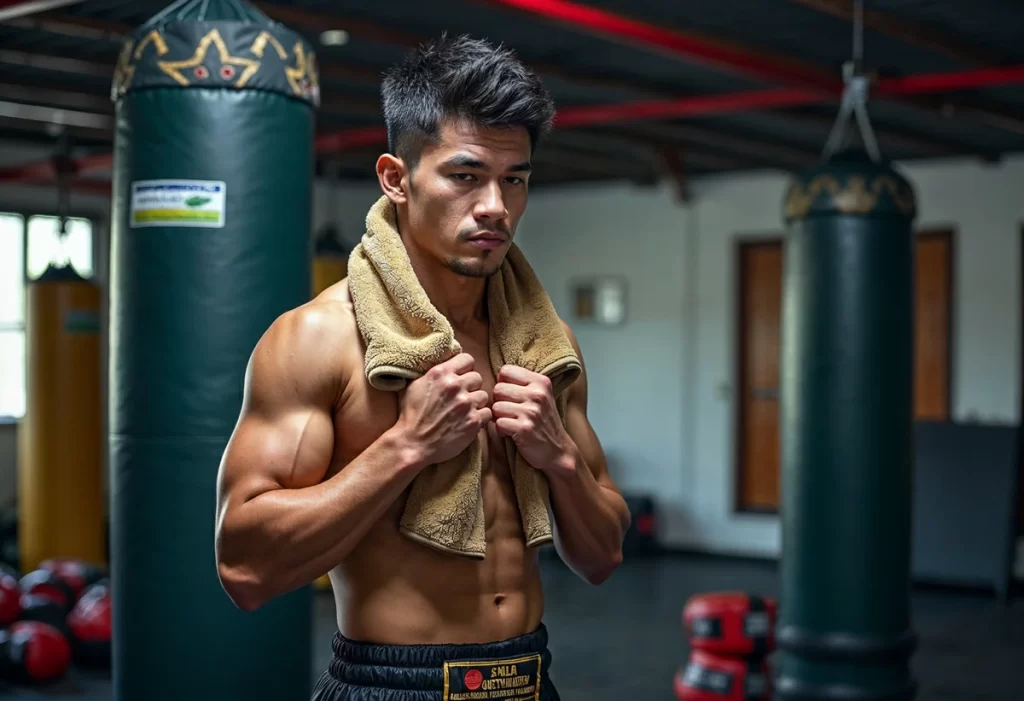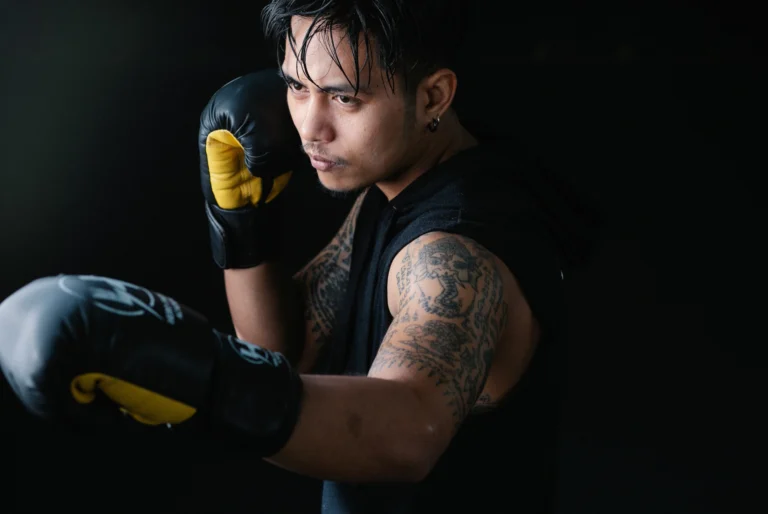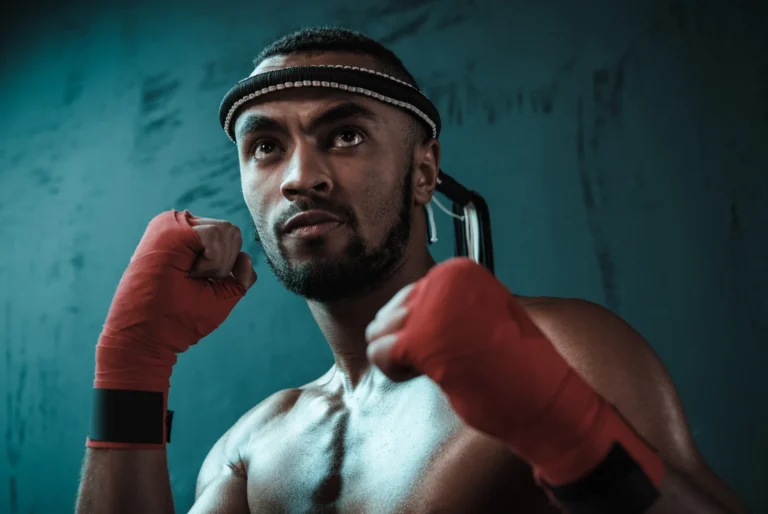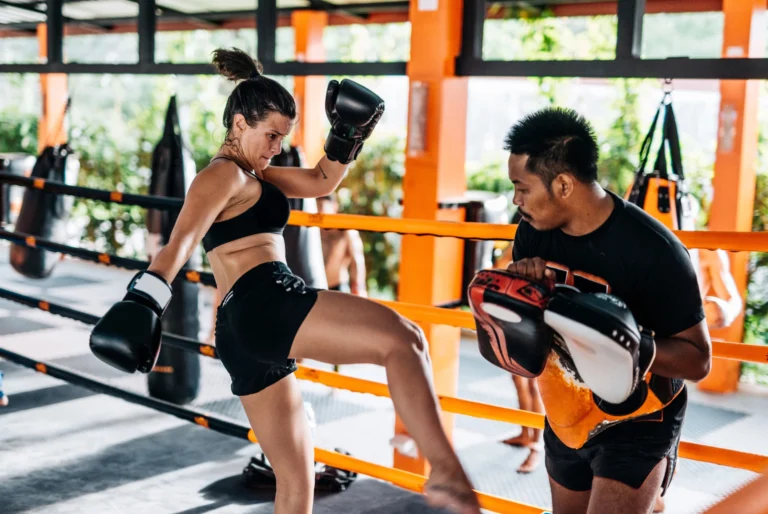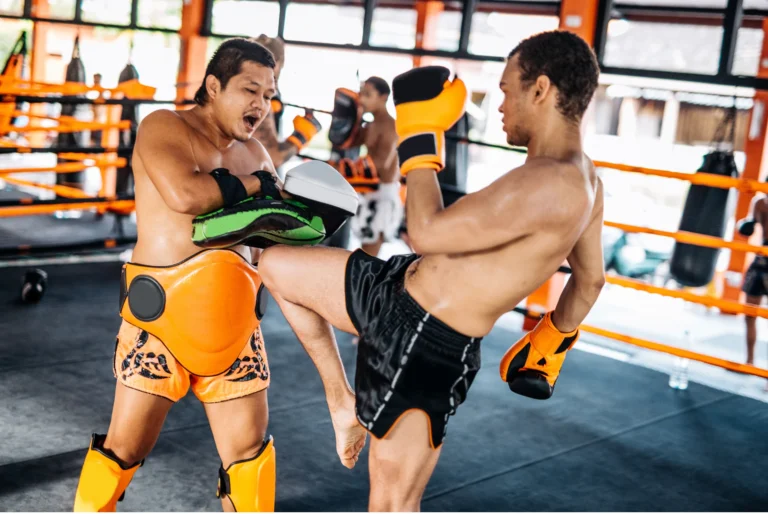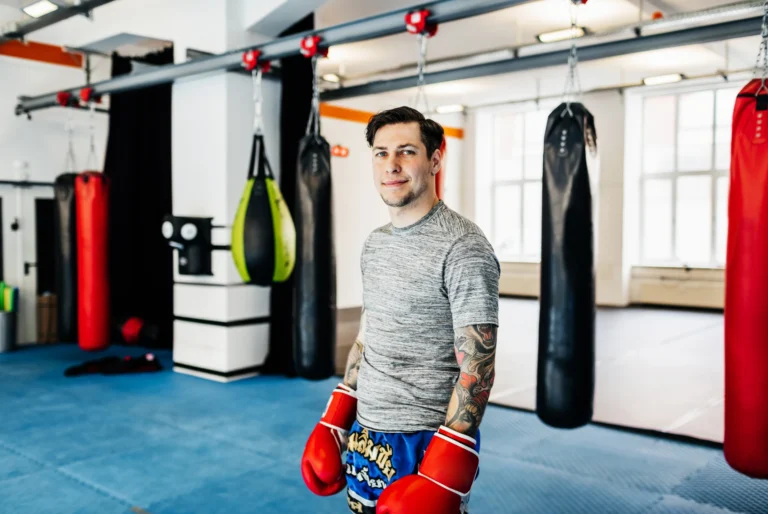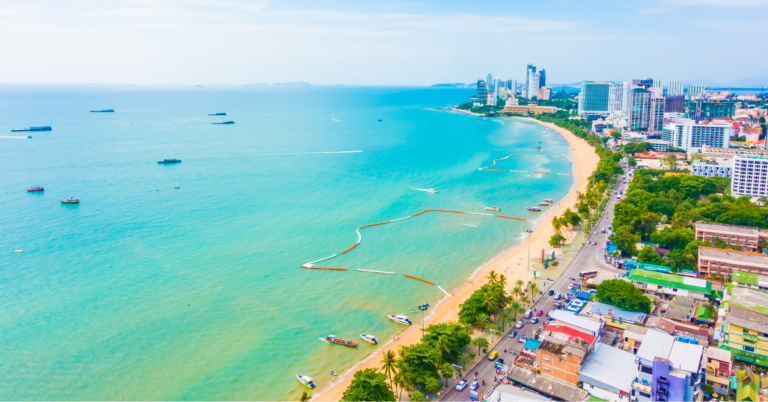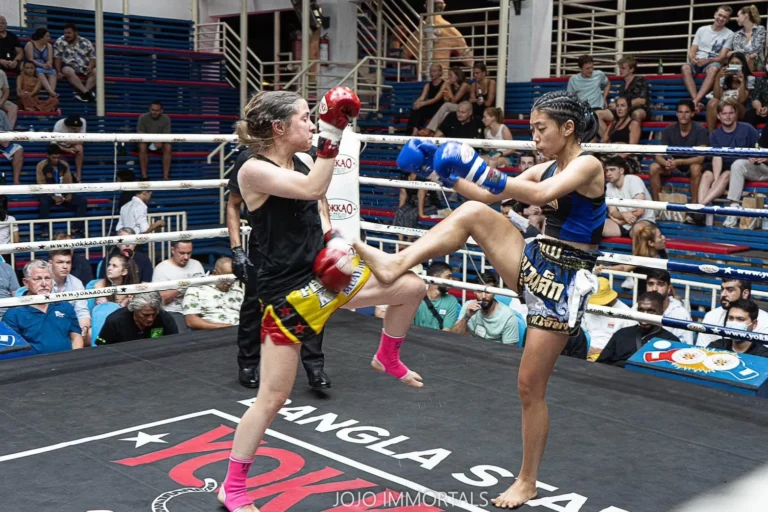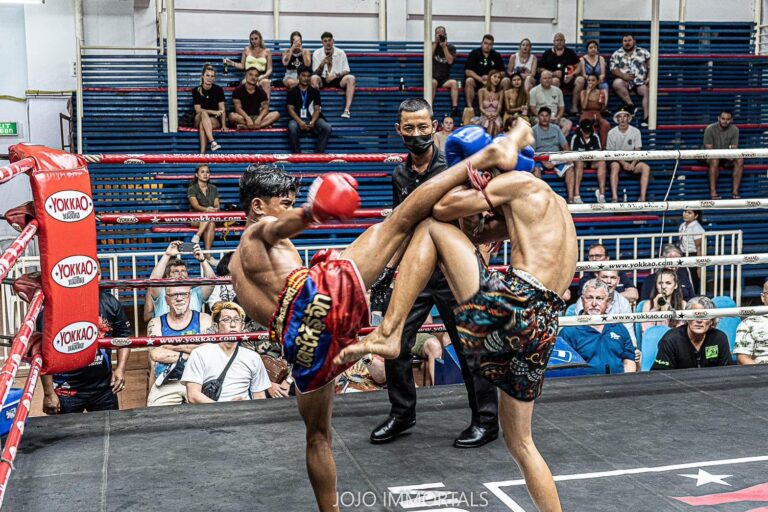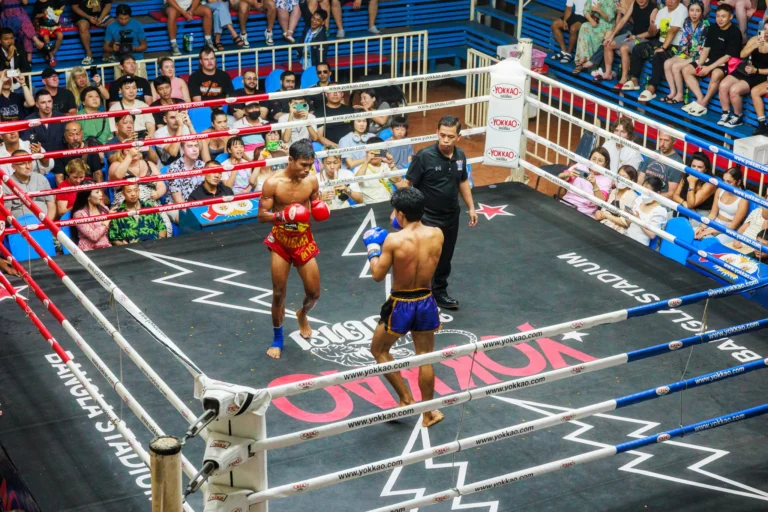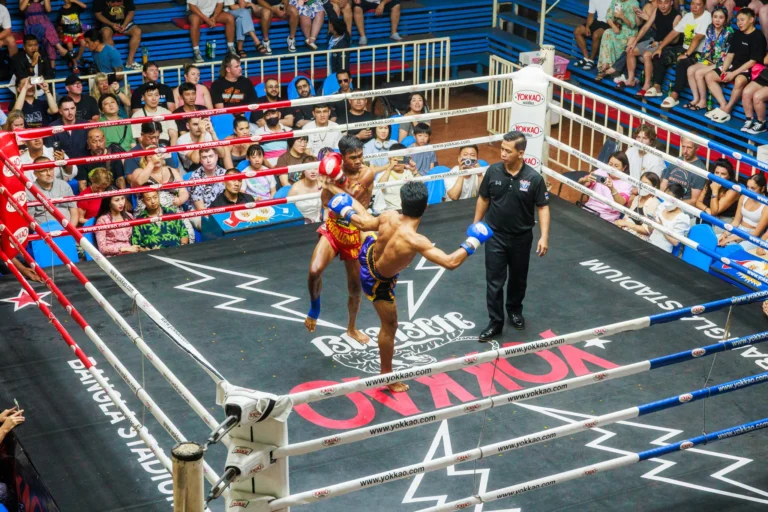The unmistakable scent of camphor and menthol fills the air backstage at Bangla Boxing Stadium. In the cramped preparation area, fighters sit in focused silence as trainers methodically apply glistening oil to weathered muscles. This ancient ritual, as essential to Muay Thai as the fighting techniques themselves, transforms ordinary athletes into warriors ready for battle.
These pre-fight preparations represent centuries of tradition, where nam man muay (Thai boxing oil) and specialized creams serve purposes far beyond simple muscle preparation. Every drop carries the weight of history, every application follows patterns passed down through generations of fighters.
The Ancient Art of Nam Man Muay
Historical Origins and Warrior Traditions
Long before modern sports science validated its benefits, Thai warriors applied herbal oils before entering battle. These preparations date back to the Ayutthaya period, when soldiers needed every advantage in hand-to-hand combat. The formulas, jealously guarded by master trainers, combined practical battlefield medicine with spiritual protection beliefs.
Ancient texts describe warriors applying special oils infused with prayers and protective mantras. Each camp developed unique recipes, believing certain combinations brought strength, speed, or invincibility. These traditions survived through centuries, evolving from battlefield necessity to sporting ritual.
Traditional Thai Medicine Connection
Nam man muay represents a living connection to traditional Thai medicine principles. Master herbalists originally created these formulas using knowledge of energy lines (sen) and herbal properties passed down through generations. The oils work on multiple levels – physical, mental, and according to traditional beliefs, spiritual.
Traditional medicine practitioners understood that certain herbs penetrated skin barriers more effectively when combined with specific carrier oils. This knowledge, refined over centuries, created formulas that modern science now recognizes for their therapeutic properties. Today’s stadium preparations honor these ancient practices while embracing contemporary understanding of sports physiology.
Understanding Muay Thai Oil Composition
Essential Ingredients and Properties
Modern Muay Thai oil typically contains a potent blend of active ingredients. Camphor provides the signature cooling-then-warming sensation, while menthol creates immediate skin stimulation. Methyl salicylate, derived from wintergreen, adds deep-penetrating warmth that fighters describe as “awakening the muscles.”
Traditional formulas often include plai (Zingiber cassumunar), a rhizome prized for anti-inflammatory properties. Turmeric adds its golden color and healing reputation, while eucalyptus oil contributes both scent and circulation benefits. Each ingredient serves a specific purpose, creating a synergistic effect greater than individual components.
Regional Formula Variations
Northern Thai camps often favor stronger camphor concentrations, believing the intensity better prepares fighters for aggressive styles. Southern preparations might include more coconut oil base, reflecting regional preferences and climate considerations. Bangkok stadiums see diverse formulas, as trainers from across Thailand bring their regional secrets.
Some Isaan trainers add special herbs found only in northeastern forests, claiming these provide unique advantages. Coastal regions sometimes incorporate sea salt or marine extracts, believing ocean elements add power. These variations reflect Thailand’s rich regional diversity and the deeply personal nature of fighter preparation.
The Science Behind Fighter Benefits
Physical Performance Enhancement
Scientific research confirms what fighters have long known through experience. The warming sensation from Thai boxing oil triggers vasodilation, increasing blood flow to applied areas by up to 40%. This enhanced circulation delivers more oxygen to muscle tissues, improving performance potential and reducing injury risk.
Menthol and camphor create what scientists call a “counterirritant effect,” temporarily overriding pain signals while stimulating nerve endings. This dual action helps fighters push through discomfort while maintaining body awareness. The thermogenic response also increases local muscle temperature without excessive movement, preserving energy for the fight ahead.
Studies show that familiar scents can trigger conditioned responses in athletes. The distinctive aroma of nam man muay becomes associated with peak performance states, helping fighters achieve optimal arousal levels through learned association.
Mental Preparation Through Aromatherapy
The olfactory system’s direct connection to the brain’s limbic region makes scent a powerful psychological tool. Camphor’s sharp aroma promotes alertness and focus, while herbal undertones can reduce pre-fight anxiety. Many fighters report that the familiar scent immediately triggers their “fighter mindset.”
Trainers understand this psychological component, using oil application as a meditation period. The rhythmic massage combined with aromatic stimulation creates a transitional state between everyday consciousness and combat readiness. This mental shift proves as crucial as physical preparation.
Application Rituals and Techniques
Traditional Application Methods
Application begins approximately 30-45 minutes before fighting, allowing oils to fully penetrate skin layers. Trainers start with major muscle groups – quadriceps, hamstrings, and calves receive generous amounts using long, firm strokes following muscle fibers. The technique matters as much as the product itself.
Shoulders and arms receive special attention, with trainers using circular motions around joints. The lower back, crucial for rotational power in kicks and punches, gets deep thumb pressure combined with oil application. Each trainer develops personal techniques, often learned through years of apprenticeship.
The Sacred Bond Between Fighter and Trainer
The application ritual reinforces the profound relationship between fighter and kru muay (boxing teacher). Through touch, trainers assess muscle tension, identify potential problems, and provide final tactical reminders. This intimate preparation time strengthens psychological bonds crucial for corner communication during fights.
Many trainers whisper prayers or encouragement during application, passing on mental strength along with physical preparation. Some fighters consider their trainer’s hands during oil application as important as training itself. This trust, built through countless sessions, becomes a source of confidence entering the ring.
Stadium Regulations and Modern Adaptations
Professional venues like Patong Boxing Stadium maintain specific guidelines about pre-fight preparations. Excessive oil application that creates slippery conditions results in warnings or required removal. International competitions often limit oil use to prevent gripping disadvantages during clinch work.
Modern formulations now include quick-absorption technologies, reducing surface residue while maintaining therapeutic benefits. Some products add SPF protection for outdoor venues, adapting ancient formulas to contemporary needs. These innovations respect tradition while meeting modern sporting requirements.
Safety considerations have led to standardized ingredient lists at major stadiums. Allergenic components require disclosure, and some venues prohibit certain substances that might cause adverse reactions. These regulations ensure fighter safety while preserving cultural practices.
Experience Authentic Pre-Fight Rituals
The application of Muay Thai oil and cream remains a cornerstone of authentic fight preparation, bridging ancient wisdom with modern athletic performance. These rituals represent more than simple warm-up routines – they embody the sport’s cultural soul and the sacred relationship between fighters and their traditions.
Witnessing these pre-fight preparations at venues like Bangla Boxing Stadium offers tourists a glimpse into Muay Thai’s deeper dimensions. The sight of fighters in quiet preparation, the distinctive aromas filling the air, and the methodical rituals preceding combat create memories that transcend typical tourist experiences. Stadium visitors who arrive early enough might observe these fascinating preparations, understanding that every fight begins long before the first bell rings.
